Nothing quite prepares you for your first sight of Thiepval, the Memorial to the Missing of the Somme. I had read about the events it commemorated and, before that, been told about them as a young boy. I’d studied the war poets at school and as a teenager had been introduced to Robert Graves’s Goodbye to All That and Erich Maria Remarque’s All Quiet on the Western Front. I knew about the vast numbers of war dead, of how they exceeded the populations of famous cities. But once there, in Picardy, gazing for the first time on Sir Edwin Lutyens’s gigantic monument, it was impossible not to gasp for air.
Those who’ve seen it will know what I mean. The construction sits on a gentle brow with a sweep of white tablets commemorating the British and Commonwealth dead on the one side and grey ranks of stone crosses commemorating the French dead on the other. And then, on the monument itself, carved into sheets of white Portland stone, are the names of all the men whose bodies were never found – over 72,000 of them. You can’t imagine so many people living in this small rural area, let alone dying there. A catastrophe was enacted in these fields.
Even now, in the 21st century, a soldier’s corpse will occasionally appear in the fields of the Somme, disgorged by the movement of the earth below or disturbed by the farmer’s plough. No one ignores that. The corpse is re-buried with military honours and if it can somehow be identified, and belongs to one of the "Missing", that man’s name is scrupulously removed from the Portland stone and he shifts his position from one of the "missing" to one of the "known".
The idea for First Light germinated, I suppose, when I first visited the Somme and Flanders battlefields with a couple of friends in 1994. (Pictured below: Mark Hayhurst)
 We toured the usual sites – the Menin Gate in Ypres, the vast Tyne Cot cemetery cresting Passchendaele, the elegant Canadian memorial at Vimy Ridge that soars like an Apollo launching pad out of the escarpment, and the Memorial to the Missing of the Somme. We wandered through some of the smaller cemeteries too, one of them I recall almost entirely full of Sheffield men who had died on the same day. And then in the village of Bailleulmont we saw the headstones, in adjacent plots, belonging to Private Albert Ingham of the 3rd Manchester Pals and his friend Private Alfred Longshaw.
We toured the usual sites – the Menin Gate in Ypres, the vast Tyne Cot cemetery cresting Passchendaele, the elegant Canadian memorial at Vimy Ridge that soars like an Apollo launching pad out of the escarpment, and the Memorial to the Missing of the Somme. We wandered through some of the smaller cemeteries too, one of them I recall almost entirely full of Sheffield men who had died on the same day. And then in the village of Bailleulmont we saw the headstones, in adjacent plots, belonging to Private Albert Ingham of the 3rd Manchester Pals and his friend Private Alfred Longshaw.
Over the years the grave of Albert Ingham, in particular, has become a popular site for pilgrimage. People leave the more beaten paths to work their way to this obscure place. For on Albert Ingham’s stone are carved the unique words "Shot at Dawn". Both these young men, volunteers from 1914, were executed in 1916, on 1 December, just two of 346 British soldiers of the Great War to lose their lives in this way – a micro-tragedy folded inside the macro one. The majority of the 346, like Ingham and Longshaw, had been punished by Field General Court Martial for desertion. But those affecting words, "Shot at Dawn", only appear on Albert’s headstone. For the rest of the 346, at least so far as their memorials are concerned, you would never know.
Such is the accusatory power of the phrase that it’s possible to forget that "Shot at Dawn" is a euphemism. But like many military euphemisms – "collateral damage", "concentration camp" – the phrase has acquired a power that the thing it is trying to escape – in this case "execution by firing squad" – can never hope to match. Dawn is a time of birth and of hope and of potential, a way of scrubbing the record clean and starting again. But all that innocence is subject to mockery when an execution squad assembles at first light.
We talked about those words a long time after our visit, our curiosity stirred not just by the naked declaration "Shot at Dawn", but also by the remainder of the inscription, which reads "One of the First to Enlist, a Worthy Son of his Father". It seemed – and still seems – an amazing report, as well as a deeply loving one. But there was something not quite right about it. Why just the father? Where was the mother in all this? Was the man a widower or did the inscription simply reflect the social conventions of the day? Was there something in the nature of the act of desertion, with its suggestions of cowardice and its proximity to "shirking", which especially needed a father’s exculpation? Or had there been a family argument between Albert’s parents over whether to put the shocking words on their son’s headstone at all? We didn’t know, and I still don’t know. In fact I didn’t want to know when I came to write First Light. To better retain the universal element of the story I felt I needed a free hand to speculate. (Pictured below: Tom Gill as Bert in rehearsal)
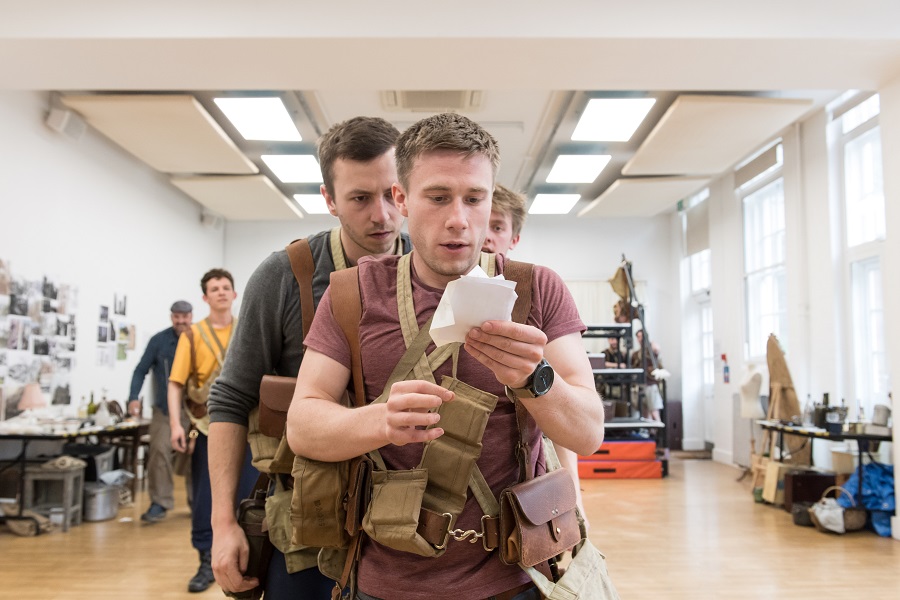 Since that visit to Bailleulmont in 1994 the debate about First World War executions has moved on considerably. In 2006 something very important happened. After many years of lobbying, the Labour government issued posthumous pardons to 306 of the executed men (the excluded being the 40 soldiers shot for murder or mutiny). So far as we can tell it was a decision that had the overwhelming weight of public opinion on its side. That weight, in truth, had been growing ever since 1918 when the effort to understand "shell shock" and what we, today, would call Post Traumatic Stress Syndrome and Combat Stress Reaction, began to gather pace. There was something humiliating, it seemed, as well as unjust, about executing men who’d experienced the fulminating industrial horror of this war, especially after military trials which owed more to Roman law than English common law.
Since that visit to Bailleulmont in 1994 the debate about First World War executions has moved on considerably. In 2006 something very important happened. After many years of lobbying, the Labour government issued posthumous pardons to 306 of the executed men (the excluded being the 40 soldiers shot for murder or mutiny). So far as we can tell it was a decision that had the overwhelming weight of public opinion on its side. That weight, in truth, had been growing ever since 1918 when the effort to understand "shell shock" and what we, today, would call Post Traumatic Stress Syndrome and Combat Stress Reaction, began to gather pace. There was something humiliating, it seemed, as well as unjust, about executing men who’d experienced the fulminating industrial horror of this war, especially after military trials which owed more to Roman law than English common law.
Certainly Albert Ingham and Alfred Longshaw had seen the worst the Somme could throw up. Both had gone "over the top" on 1 July, and both had been involved in desperate actions in Montauban and Trones Wood in the first weeks of the battle. Their desertion could never be described as heroic, but perhaps it could be seen as reasonable – the rational outcome of being exposed to too much slaughter, or even the result of imaginations working lucidly and possibly with too much clarity. Certainly between 1939 and 1945 there were no more Albert Inghams and Alfred Longshaws because the British Army had stopped executing men. The lost practice was not lamented.
In Denis Winter’s great book, Death’s Men, there is a description of how strange and frightening it was for soldiers to leave the security of the trench and go "over the top" – surely the defining experience of the Great War infantryman. Few men talked about it openly, either at the time or later when looking back. But those who did clearly believed it to be the most intense event of their lives. The whistle went and the climb into No Man’s Land began. Nearly all of them mention being instantly out of breath the moment they emerged above the parapet into the open. Some men underwent what can only be called an out-of-body experience. Others likened the climb to being plunged into an icy bath. In other words, as they left the trench they were gasping for air, pretty much as we gasp for air today, when we see what remains.
- First Light by Mark Hayhurst runs at Chichester Festival Theatre’s Minerva Theatre from 10 June to 2 July

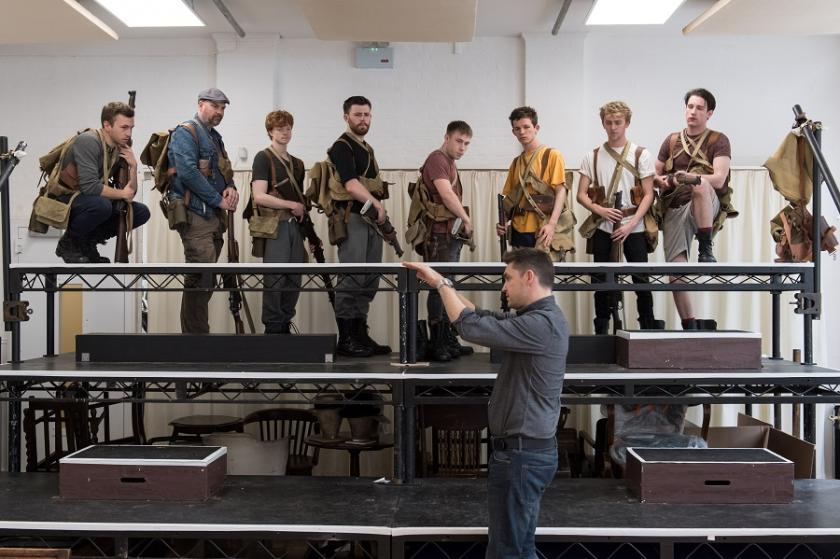


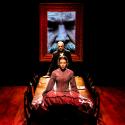
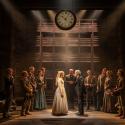


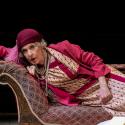



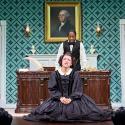


Add comment